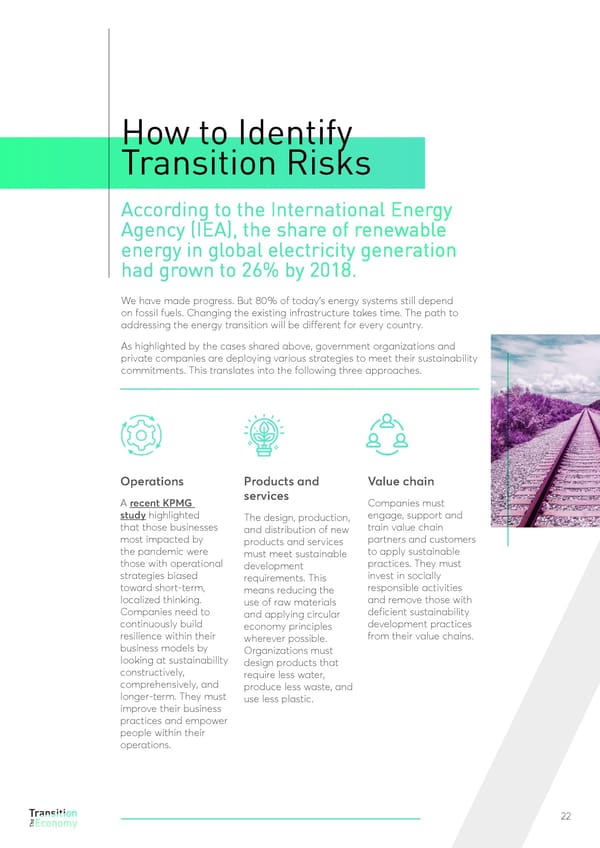How to Identify Transition Risks According to the International Energy Agency (IEA), the share of renewable energy in global electricity generation had grown to 26% by 2018. We have made progress. But 80% of today’s energy systems still depend on fossil fuels. Changing the existing infrastructure takes time. The path to addressing the energy transition will be different for every country. As highlighted by the cases shared above, government organizations and private companies are deploying various strategies to meet their sustainability commitments. This translates into the following three approaches. Operations Products and Value chain A recent KPMG services Companies must study highlighted The design, production, engage, support and that those businesses and distribution of new train value chain most impacted by products and services partners and customers the pandemic were must meet sustainable to apply sustainable those with operational development practices. They must strategies biased requirements. This invest in socially toward short-term, means reducing the responsible activities localized thinking. use of raw materials and remove those with Companies need to and applying circular deficient sustainability continuously build economy principles development practices resilience within their wherever possible. from their value chains. business models by Organizations must looking at sustainability design products that constructively, require less water, comprehensively, and produce less waste, and longer-term. They must use less plastic. improve their business practices and empower people within their operations. 22
 The Transition Economy High Res Page 21 Page 23
The Transition Economy High Res Page 21 Page 23